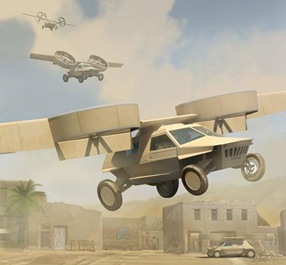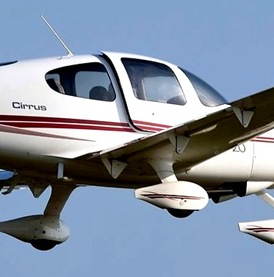The folks who hold the lien on most pilots’ cars.
The iPad 2 as an electronic flight bag
If you already own or are thinking of owning an iPad 2 as an electronic flight bag, a lengthy post by John Ewing for his Aviation Mentor blog is a must read as he gave his initial impression of using the device in flight. John began his post by noting that between aircraft maintenance and the weather, getting into the air with the new iPad has been a problem but he finally managed to do so for a 1.9 hour flight.
So far, John can give the following impressions of the iPad 2 as an electronic fight bag:
- It has a slightly smaller size and thinner profile – making it much lighter than the original iPad.
- There are two built-in cameras, one that is front-facing and one that is rear-facing. However, John also noted that the rear camera “sucks” and he is not even sure why Apple bothered to have one at all.
- When loading a terminal procedure from ForeFlight, Jeppesen’s app or SkyCharts Pro, the faster graphics performance will be evident. Also, downloading and scrolling around on charts is much faster as well.
- The screen is not much different from the original iPad (however, there is a wider range of brightness offered) while battery life is on par with the original model as well – about 10 hours.
- The GNS 5870 Bluetooth GPS Receiver
will work just as well with the iPad2 as it does with the original iPad. However, John has one complaint about the touchiness of the swipe-style on/off switch as he noted that its too easy to inadvertently turn the thing on when stowing it in your flight bag.
- The accelerometer, gyroscope and compass features all seem to still indicate that there is not yet an app that is capable of providing accurate Attitude Heading and Reference (AHARs) features. Hence, the notion of using an iPad in flight as a back-up attitude indicator is still far from reality.
John ended his post by recommending a list of nearly twenty aviation applications that he has already tried out on his iPad 2 and are well worth taking a closer look at if you already have your own iPad 2 as an electronic flight bag.
New flying car concept: The Transformer
The web aviation blog has pointed out that Carnegie Mellon University’s Robotics Institute had received US$988 000 late last year to develop an autonomous flight system for a Defense Advanced Research Projects Agency (DARPA) military flying car concept called the Transformer. According to DARPA’s plans, the Transformer is intended to be a four-wheeled military vehicle that can also turn into a Vertical Takeoff and Landing (VTOL) aircraft. Specifically, it will seat four and have a range of 250 nautical miles on a single tank of fuel plus a payload of 1 000 pounds.
The Transformer concept is designed to improve ground troop mobility – especially over difficult or hostile terrain. However, the flight system will be one of the many challenges with the Transformer’s development as ordinary soldiers will not be able to fly the vehicle. Hence, the flight system will largely need to be automatic – which is where Carnegie Mellon steps in as their robotics team won DARPA’s Urban Challenge in 2007 to design an automatic car.
Also taking part in the development of the Transformer will be AAI and Lockheed Martin who will create the overall design concept plus Pratt and Whitney Rocketdyne who will develop the engines.
Open door distracts Cirrus pilot and causes an accident
General Aviation News has posted a summary of a 2009 accident report from the USA’s National Transportation Safety Board (NTSB) that is well worth reading as it offers a couple of lessons for all general aviation pilots. The incident near Gaithersburg, Maryland itself involved a Cirrus SR22 and pilot who had logged 327 hours that included 161 in a Cirrus plus had about seven hours of actual instrument time and an additional 63 hours of simulated instrument experience.
According to the accident report, the weather at the time of the accident included two miles of visibility and overcast clouds at about 400 feet. However, and as the Cirrus entered into clouds as about the 700 to 1,000 foot level, the accident report noted that:
The passenger door opened two to three inches, allowing rain, cold air, and increased noise to enter the cockpit. The pilot said he became spatially disoriented and that the airplane subsequently stalled and started to spin. The pilot activated the Cirrus Airplane Parachute System and the plane descended toward the ground. The left wing hit a parked vehicle and the airplane came to rest on a road about half mile west of the airport. The airplane’s left wing was fractured and the empennage was separated just forward of the horizontal stabilizer.
Luckily, the pilot was not hurt and he choose to quickly deploy the parachute system before it was too late.
Nevertheless, a subsequent examination of the aircraft as well as the passenger door locking mechanism did not reveal any mechanical problem or anomalies. Hence, the accident report concluded that the cause of the accident was the pilot’s spatial disorientation (after the passenger door opened during the flight) in instrument meteorological conditions but contributing to the accident was the pilot’s failure to properly secure the door latch before takeoff.
In other words and before you take off, be sure that you have properly inspected your aircraft and have secured all doors. Moreover and while a door opening during a flight may be a distracting and uncomfortable experience, don’t let it distract you from trying to fly and control the aircraft. Finally and if you loose control of the aircraft for any reason, be sure to quickly activate the parachute system as it may end up saving your life and the lives of your passengers.
Overcoming a landing issue
CFI Earl Kessler has posted an interesting question and dilemma on the Ask a Flight Instructor blog where he noted that he is the 4th CFI to take on particular student pilot who is very intelligent, comes from a flying family and has 50 hours of flying but has not soloed yet. Earl pointed out that his student has no problem with aircraft control other than landing. He then noted:
He seems to have a problem transitioning from round out to flare. Without my input, he seems to want to make the airplane one with the earth without flairing. I have flown with him twice and had him do low passes in ground effect to show him control of the airplane at low altitude and airspeed. This he does fine. When I direct him to land though, he still screws up the flair and either ballons up or does a hard bouncing landing that I need to rescue. Any suggestions?
Commenter Lance asked if the student is starting his flare on his own at a good height. Lance then added that if this is the case, he has found that it is better to tell a student pilot to try and keep the aircraft as close to the ground as possible without touching it. As power is reduced, the aircraft will then settle on the ground. Lance also added that if the student is having trouble visualizing where to start a flare, Earl should start probing to see how the student is looking at the whole landing procedure as a bad sight picture can lead to problems with determining flare height.
John A Lindholm on the other hand zeroed in on the vision issue and asked Earl if he has watched his student’s eyes during the flare as the problem might be a fixation issue. He also asked about the student’s airwork and whether or not he is “thinking” too much about the landing as too much thinking can delay basic flight control.
Meanwhile, John D. Collins pointed out that some individuals have difficulty determining whether or not they are sinking or rising. Hence, they cannot sense the ground coming up quickly. John then suggested having the student stand on the tarmac and while focusing on the horizon, bend his knees and observe the sink or rise while he lowers and raises himself. In that way, he can start to recognize when the plane is rising, sinking or level.
Several other readers also posted great comments and suggestions for Earl but we would also like to ask you our readers what you think of student’s landing problems. Moreover, did you have issues landing when you were a student pilot and if so, how did you overcome them?
Why aren’t there more female airline pilots?
We’ve mentioned issues and barriers specific for female or would be female pilots in the past (see Teaching women to fly and What are the training barriers for female pilots?) but Cathy Gale has posted a lengthy article from CNN Travel on the Winged Victory Women in Aviation Webzine about the lack of female airline pilots that is well worth reading by both current and would be female pilots. The CNN Travel article included a couple of startling statistics about female airline pilots, including:
- Women make up just 5% of the 53,000 members of the Air Line Pilots Association, a pilot association for pilots at major and regional carriers in the USA and Canada.
- Only about 450 women worldwide are airline captains according to the International Society of Women Airline Pilots. In other words, they are pilots in command who supervise all other crew members on a flight.
- Cathy herself also wrote at the beginning of her post a news article from 2008 about UK pilot Lynn Barton which mentioned that out of the 10,000 airline pilots in the UK, only 175 were women.
The CNN Travel article then noted that one of the biggest hurdles women face to become pilots are financial obstacles as going the civilian route to become an airline pilot can cost up to US$100,000 in training while women who do train to become any type of pilot tend to do so because of a family connection to the profession or to aviation.
Hence, we want to ask you our readers who regularly fly on commercial airlines a simple question: When was the last time you flew and heard a woman’s voice over the loudspeaker? What airline was it and where were you flying to?


